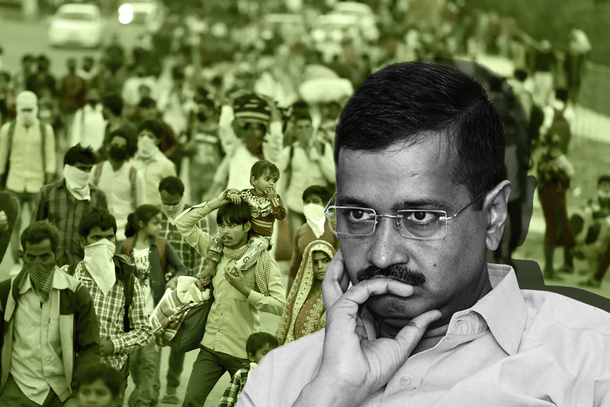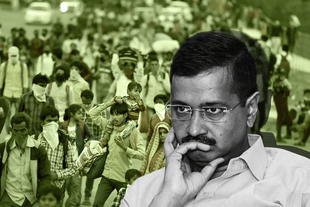Politics
Migrant Chaos Shows Delhi Can’t Work As Trishanku: Neither State Nor UT
R Jagannathan
Mar 30, 2020, 11:50 AM | Updated 01:33 PM IST
Save & read from anywhere!
Bookmark stories for easy access on any device or the Swarajya app.


The humanitarian disaster set off by the exodus of lakhs of migrants from Delhi after the announcement of the 21-day lockdown to slow down the spread of the Covid-19 pandemic is actually an indirect indictment of Delhi’s Trishanku status: it is neither a state nor a Union Territory. It has to be one or the other, not both.
BJP member of the Rajya Sabha Subramanian Swamy tweeted the other day that Delhi needs one government to handle the lockdown effectively. He said: “For the remainder of the 21 days lockdown, we cannot afford two governments in the same city. Hence, the Delhi govt must be suspended and all logistics must be handed over to the army. Delhi Police can tackle crime issues and assist the army in logistics.”
We might not have had to witness heart-rending scenes of poor people choosing to walk hundreds of miles to their homes in towns and villages of Uttar Pradesh and Bihar if Delhi had either been a full-fledged state or Union Territory.
Now, with political direction and policies being set by the state government of Arvind Kejriwal, and policing left to the home ministry, neither party is stepping up to the plate to enable the migrants to stay in Delhi or move out in an orderly fashion after screening for infections.
It was left to Uttar Pradesh Chief Minister Yogi Adityanath to make up for the lapses of the Delhi and central governments. It is unforgivable.
However, the real issue does not relate only to the migrant crisis, as Swamy’s tweet suggests. The migrant crisis has only highlighted the unviability of a system with divided responsibilities.
The logical question to ask is this: what is the point of keeping Delhi in this indeterminate state, where power and accountability remain divorced, giving both the state and the centre the option to blame the other for any lapses.
There are three basic options before the Centre to remedy this by altering the Delhi statehood law.
One, Delhi can be bifurcated, with one part being the Union Territory of Delhi run by the Centre, and the other becoming a full-fledged state comprising areas outside the New Delhi Municipal Corporation (NDMC) and the Cantonment area.
Two, Delhi can be reconverted into a Union Territory with an elected assembly, but with the Centre having executive powers over the territory.
Three, one could attempt a different kind of bifurcation, where the NDMC and Cantonment become a Union Territory, and the remaining areas are merged with the contiguous states, mostly Haryana and Uttar Pradesh. The states would benefit by having a highly developed metropolitan area on their borders with the national capital.
The second option is probably the best one, of making Delhi — or the National Capital Territory of Delhi — a Union government responsibility. The second best is option three, and third best is bifurcation.
All three options are better than the one we have today.
Jagannathan is former Editorial Director, Swarajya. He tweets at @TheJaggi.




